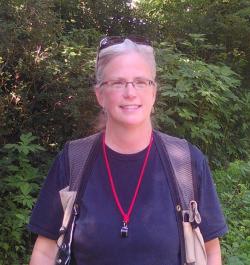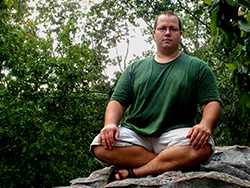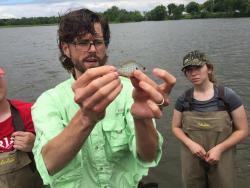The John J. Brander and Christine E. Rundblad Research Fellowship Program at the Milwaukee Public Museum seeks to stimulate fundamental research by scientists doing research on Wisconsin biodiversity or environmental issues, especially those that utilize and strengthen the natural science collections at MPM.
 Dr. Suzanne Joneson
Dr. Suzanne Joneson
Department of Biological Sciences, UW-Waukesha
Research: Dr. Suzanne Joneson will be collecting free-living and lichenized forms of the cyanobacterium Nostoc. Cyanobacteria are important organisms for the health and growth of plants, as cyanobacteria are one of the few microbial groups that can make atmospheric nitrogen available for plant growth via nitrogen-fixation. Dr. Joneson's collections will expand our understanding of free-living and lichenized Nostoc biodiversity in Wisconsin, and will generate population level markers for use in future studies that investigate if and how Nostoc moves throughout the environment or between symbiotic lifestyles.
 Dr. Todd Levine
Dr. Todd Levine
Department of Life Sciences, Carroll University, Waukesha, WI
Research: Dr. Todd Levine will study how mussel shells are indicators of environmental change. Mussel shells change depending on the physical conditions under which they grow, becoming long and narrow or short and “inflated.” Using historical and recent collections and working with on-going efforts to digitize Museum collections, he will launch a citizen science project to measure key features of shell shape and to invite the public to participate. Understanding mussel shell shape will help to ensure that when mussels are moved due to construction or contamination, they will be given the best chance of survival. This project will also give us more insight into stresses and recovery of our waterways, and help us to better understand the mussel species themselves.
 Dr. Mike Pauers
Dr. Mike Pauers
Department of Biology, UW-Waukesha, WI
Research: Dr. Mike Pauers will continue his search for the large-scaled Orangespotted Sunfish in Wisconsin. He will expand the project to include genetic diversity of the species as well as historical versus contemporary abundance in Wisconsin.

